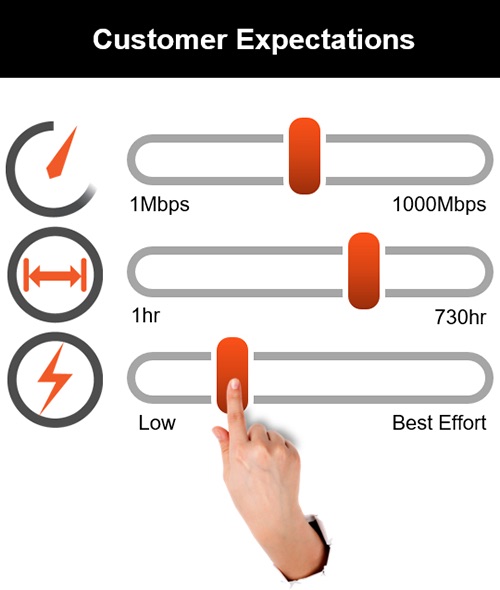Network Service Innovation with SDN and OpenFlow
By: Calvin Chai, Alexander Jeffries

In addition to higher and higher bandwidth, broadband service customers increasingly want the ability to tailor services to their specific needs. For example, a company might want to ramp up bandwidth for overnight backups, going from 10 Gbps to 100 Gbps, but only between the hours of midnight to 4:00 am. Another company might want to apply a firewall filter and QoS policy for a company-wide streaming broadcast, but only for an hour between 10:00 and 11:00 a.m. on a specific day. This type of service customization is difficult or impossible to accomplish with traditional networking technology, but SDN and OpenFlow point the way to policy-driven networks where such customer-driven changes are commonplace. In this article, we’ll look at why traditional networks can’t deliver the agility service providers need to satisfy their customers, and how SDN and OpenFlow can.
Limitations of Layer 2 and Layer 3 Networking
Layer 2 and Layer 3 networks have been built for decades. They consist of switches and routers and leverage familiar protocols such as Ethernet, VLANs, trunking, BGP, OSPF and others. These protocols govern how traffic is forwarded and are built upon the 7-layer OSI model. And because this model is relatively mature, there’s an inherent reliability and a clear understanding of how these networks are built, how they work, and how they are maintained.

Figure 1: A self-service customer dashboard.
The main purpose of Layer 2 and Layer 3 networking is to allow access from any client to any client on the same network. This is a very powerful idea, and is the reason why the Internet works. But traditional networking relies on hard-coded configurations in switches and routers – manually coded instructions for how packets are forwarded. The problem with this is that it takes time and effort to reprogram the network. It can take days for service provider network teams to execute a change order.



















